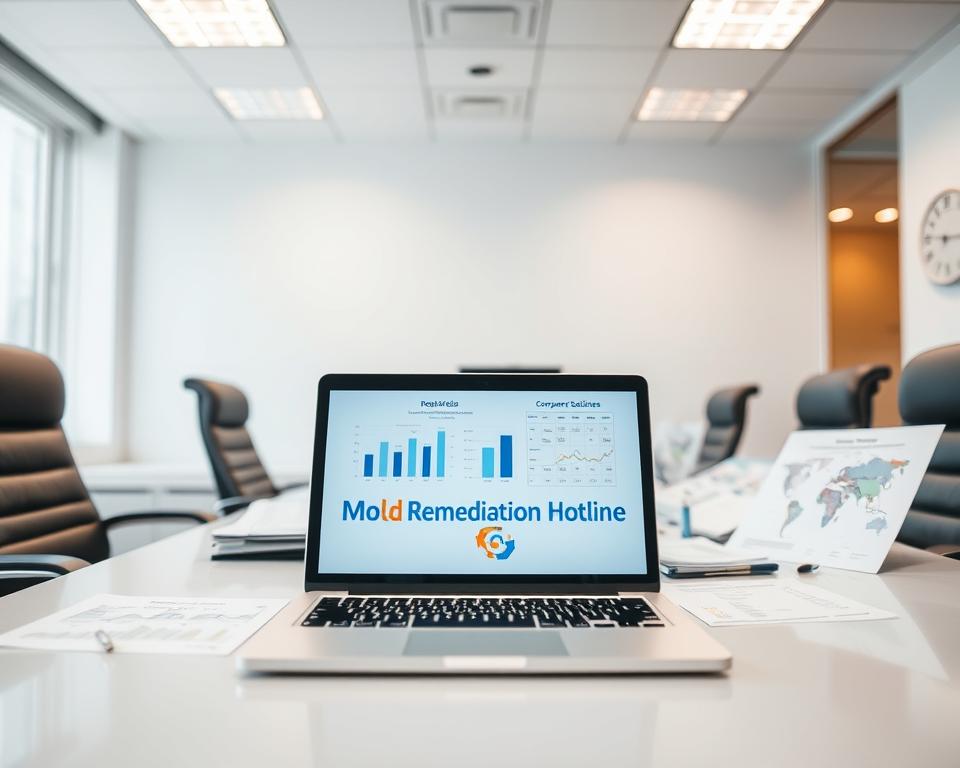Did you know that addressing fungal contamination in homes costs Americans over $2,200 on average? This expense can spiral quickly if hidden growth goes unnoticed, making early action critical. The price varies widely based on factors like affected areas, labor rates, and regional climate risks.
Homeowners often face tough choices between professional services and DIY methods. While initial savings from self-treatment seem appealing, improper handling risks recurring issues. Experts use advanced tools to detect hidden spores and prevent regrowth, which untrained individuals might miss.
Geography plays a surprising role in pricing. States with high humidity or strict safety regulations often see fees 20-30% above national averages. Coastal regions in the Southeast, for example, frequently require more intensive treatments than arid zones.
Key Takeaways
- Multiple factors influence final expenses, including contamination severity and property layout
- Certified professionals identify hidden growth that DIY kits often overlook
- Coastal areas typically face higher service fees than inland regions
- Immediate costs represent only part of the total financial impact
- Preventive measures reduce long-term spending on health and structural repairs
Understanding the Basics of Mold Remediation and Removal
Effective management of indoor fungi involves specialized techniques beyond basic cleaning. Many property owners mistakenly believe wiping visible growth solves the problem, but hidden colonies often remain. Proper solutions require systematic approaches that address both symptoms and root causes.
What Does Professional Fungal Management Involve?
Certified experts follow a four-stage process to ensure thorough results. Initial assessments identify contamination sources and hidden hotspots using infrared cameras and moisture meters. Containment barriers then isolate affected zones, preventing spore migration during treatment.
| Aspect | Comprehensive Management | Basic Elimination |
|---|---|---|
| Scope | Addresses root causes & prevents recurrence | Removes visible growth only |
| Equipment | HEPA filtration, antimicrobial treatments | Household cleaners |
| Outcome | Long-term protection | Temporary solution |
Critical Distinctions in Treatment Approaches
Basic elimination focuses solely on visible surfaces, while comprehensive management targets airborne particles and structural moisture. Professionals discard irreparable materials like drywall safely, unlike DIY methods that risk spreading contaminants. Specialized air scrubbers capture microscopic spores often missed in amateur attempts.
Factors Influencing Mold Removal Costs
Multiple elements determine how much property owners spend addressing fungal growth. While visible contamination grabs attention, hidden issues often dictate the final price tag. Three primary aspects shape service fees across different scenarios.

Biological Varieties and Contamination Levels
Dangerous fungal species like Stachybotrys require sealed containment zones and EPA-approved antimicrobial solutions. These protocols add 30-50% to standard service charges compared to common household varieties. Treatment complexity escalates when colonies penetrate structural materials beyond surface-level cleaning.
Water Intrusion and Structural Impact
Persistent leaks create ideal conditions for rapid spore multiplication. Professionals often discover secondary contamination in adjacent materials during inspections. A recent industry study found unresolved moisture issues lead to 72% of recurring cases within six months.
| Factor | Impact on Process | Cost Effect |
|---|---|---|
| Toxic species | Requires biocides & isolation | +$500-$2,000 |
| Concealed growth | Needs infrared detection | +$300-$1,200 |
| Structural saturation | Demands material replacement | +$1,800-$5,000 |
Access challenges in attics or crawl spaces extend project timelines. Technicians may need protective gear and specialized extraction tools for confined areas. These variables make accurate upfront assessments critical for budget planning.
Mold Remediation and Removal Cost Comparison
Homeowners face a complex landscape when selecting fungal decontamination providers. Service fees vary dramatically, with established companies charging between $1,200 and $10,000 based on project scope. ServiceMaster typically operates in the $1,200-$4,500 range, offering balanced solutions for moderate contamination cases.
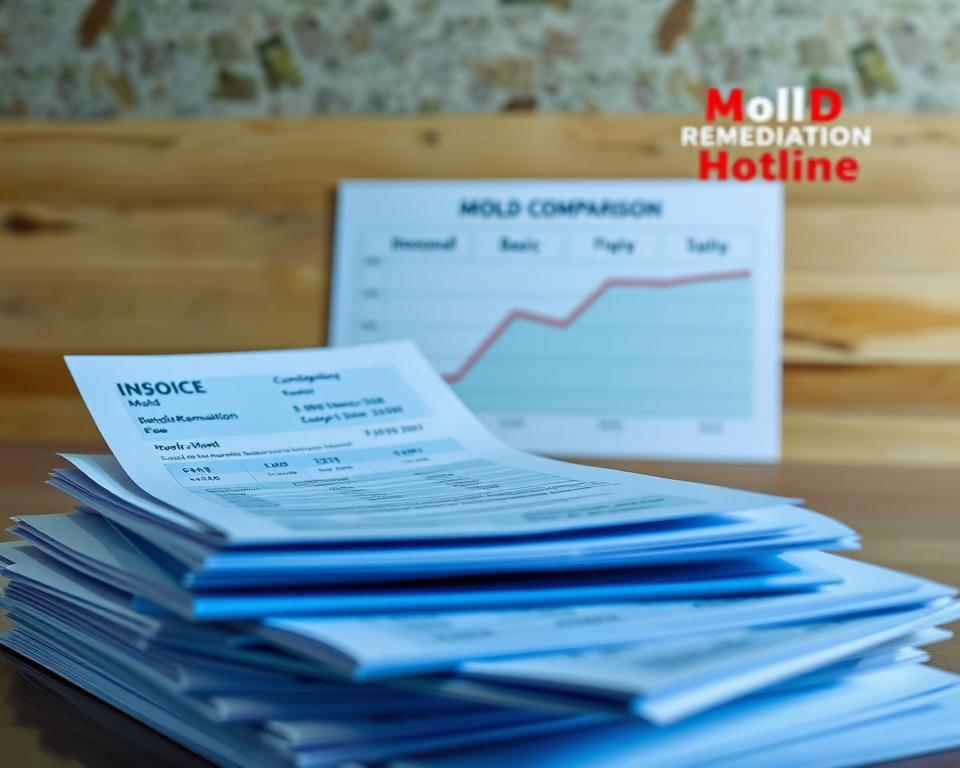
ServPro’s broader pricing spectrum ($1,500-$10,000) accommodates both minor cleanups and full-scale restoration projects. This disparity stems from differing service models—some firms focus exclusively on spore elimination, while others bundle it with water damage repairs or structural drying.
Three critical considerations emerge when evaluating quotes:
- Specialized providers often deliver targeted expertise but may lack ancillary repair capabilities
- General contractors frequently include preventive treatments that reduce long-term risks
- Hidden charges for air quality testing or material disposal can inflate initial estimates
Industry leaders recommend obtaining at least three detailed proposals. This practice reveals whether companies include moisture barrier installation or post-treatment inspections in their base pricing. A 2023 consumer survey found properties requiring combined water damage and spore management paid 38% more than those addressing isolated growth.
Price shouldn’t override competency verification. Always check contractor certifications and review containment protocols before committing. Proper documentation of microbial levels before and after treatment provides crucial evidence of service effectiveness.
Square Foot Pricing and Budgeting Considerations
Property owners often ask: “How much should I expect to pay per square foot?” The answer varies from $2.50 for basic surface cleaning to $25 for complex containment projects. This pricing model helps standardize estimates while accounting for contamination depth and required safety measures.
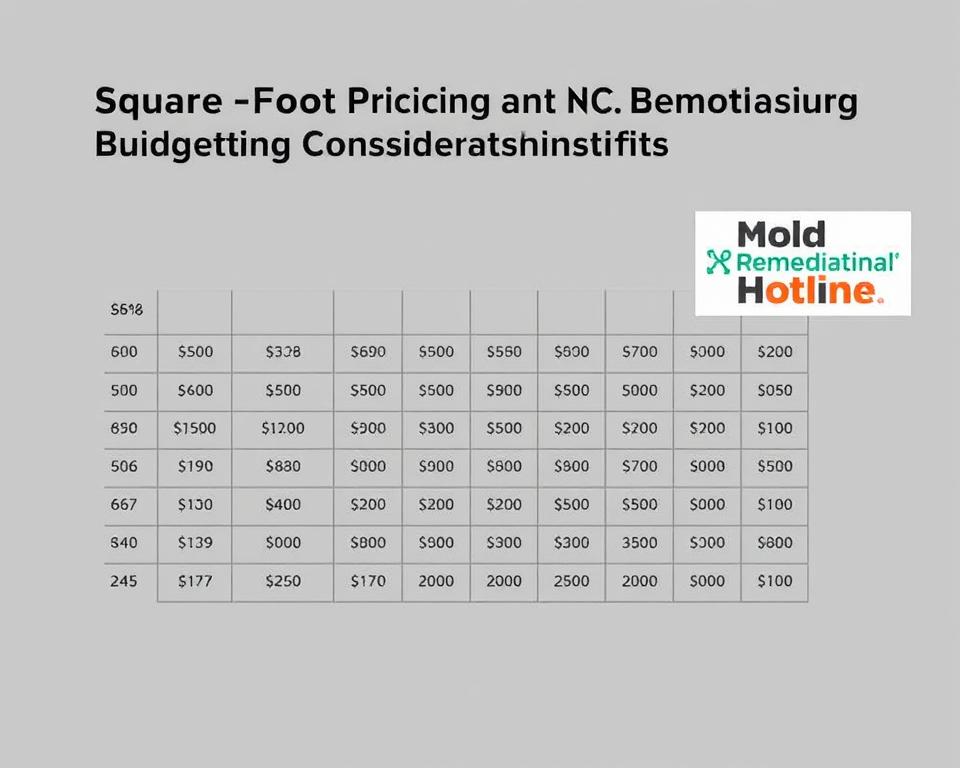
Cost Per Square Foot Analysis
Small spaces under 10 square feet might only need household cleaners, per EPA guidance. Areas exceeding this threshold typically require professional-grade equipment. A 100-square-foot zone could range from $1,000 to $2,500 depending on wall cavities or subfloor involvement.
Budgeting for Small vs. Large Areas
Minor surface issues cost less than deep-rooted growth in HVAC systems. Always allocate 15-20% extra for hidden colonies discovered during work. One homeowner’s $500 closet project ballooned to $1,800 when technicians found spores behind baseboards.
Material disposal fees and air quality tests often surprise unprepared clients. Reputable companies itemize these expenses upfront. Pro tip: Request line-item quotes comparing labor rates and antimicrobial treatment costs.
Home Inspection and Testing for Mold
Many homeowners wonder if that musty smell warrants professional attention. Certified assessments provide answers through detailed air quality checks and surface analysis. Specialists use infrared scanners and moisture detectors to find hidden colonies behind walls or under flooring.
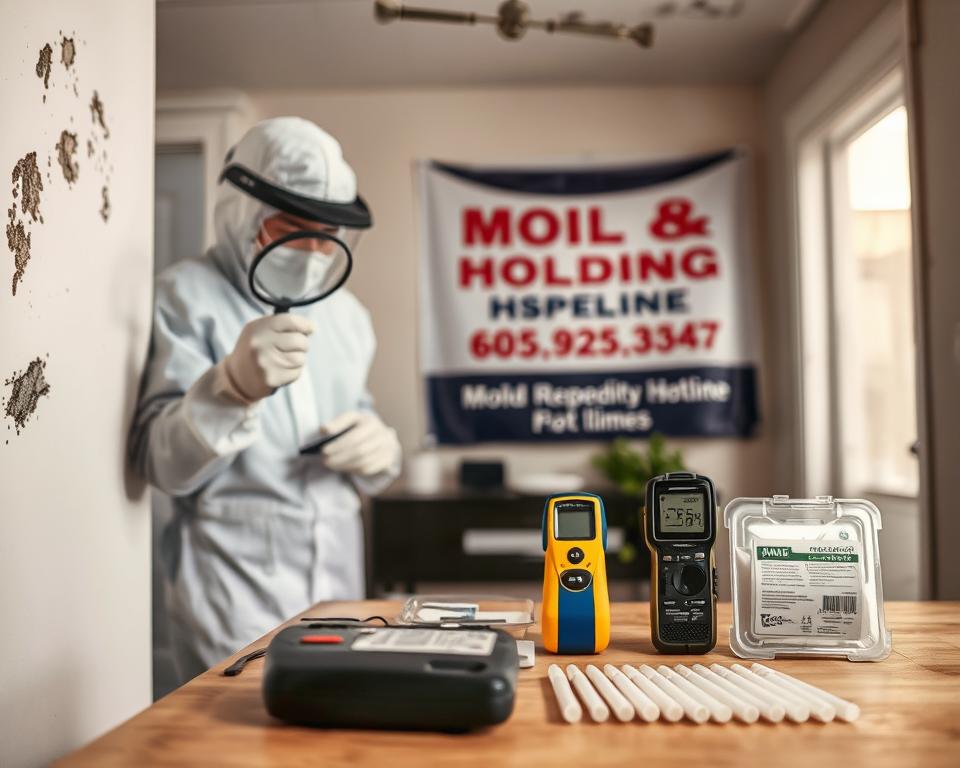
When to Call a Professional
Schedule evaluations if you notice persistent odors or allergy flare-ups. A 2,500-square-foot property typically requires $450-$800 for thorough inspections. Smaller 1,000-square-foot homes average $300, while lab analyses range from $50-$700 based on sample types.
| Service | Purpose | Average Price |
|---|---|---|
| Visual Inspection | Identify visible growth patterns | $10-$15/sq.ft |
| Air Quality Testing | Detect airborne spores | $300-$450 |
| Surface Sampling | Determine species types | $50-$150 per sample |
Insurance providers often demand documented proof before approving claims. Early detection prevents minor issues from becoming structural nightmares. One family avoided $8,000 in repairs by catching basement contamination during routine checks.
Professionals map contamination spread using thermal imaging. This data helps create targeted treatment plans. Remember: DIY test kits lack the precision of certified lab equipment.
Labor, Equipment, and Material Costs
Skilled expertise drives over half the price tag for resolving fungal issues. Industry data shows labor accounts for 60% of total expenses, while materials and tools make up the remaining 40%. This split reflects the technical demands of safe containment and thorough spore elimination.

Breakdown of Labor Expenses
Certified technicians undergo rigorous training to handle hazardous substances. Their work includes setting up containment zones, operating industrial air scrubbers, and preventing cross-contamination. Protective gear alone ranges from basic respirators to full-body suits in high-risk scenarios.
| Expense Type | Professional Service | Basic Approach |
|---|---|---|
| Labor | 60% (Specialized technicians) | 15% (Untrained labor) |
| Equipment | 25% (HEPA vacuums, air scrubbers) | 40% (Rental tools) |
| Materials | 15% (Antimicrobial treatments) | 45% (Replacement drywall/flooring) |
Tools and Materials Involved
Industrial-grade vacuums remove 99.97% of airborne particles, unlike standard cleaners. Antimicrobial solutions penetrate porous surfaces to prevent regrowth—a critical step DIY methods often skip. Reconstruction supplies like insulation and drywall add to material costs after contaminated areas get cleared.
One homeowner discovered their $800 DIY attempt failed because household cleaners couldn’t reach hidden spores. Professionals resolved it for $2,300 using thermal imaging and hospital-grade disinfectants. Quality equipment justifies higher initial spending by preventing repeat issues.
DIY vs. Professional Mold Remediation
When should you tackle household issues yourself versus calling experts? The EPA guidelines clarify this decision: projects under 10 square feet might suit homeowner efforts if uncontaminated by sewage and absent respiratory concerns. Beyond this threshold, specialized intervention becomes essential to prevent spore dispersion and structural compromises.
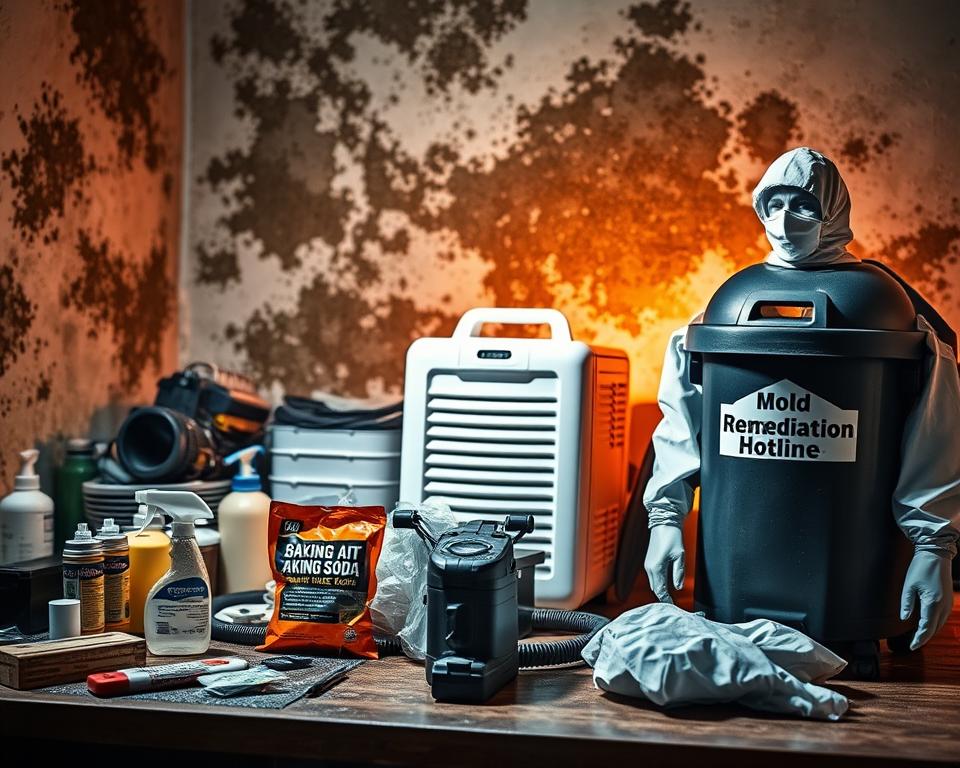
Advantages of Expert Intervention
Certified teams bring industrial-grade containment systems and microscopic spore detection capabilities. Their protocols address airborne particles and embedded growth that standard cleaning misses. Consider this comparison of approaches:
| Aspect | Professional Service | Homeowner Attempt |
|---|---|---|
| Containment | Sealed barriers & negative air pressure | Plastic sheeting & tape |
| Detection | Infrared cameras & moisture meters | Visual inspection only |
| Safety | OSHA-compliant respirators | Dust masks |
| Results | Guaranteed spore elimination | Temporary surface cleaning |
Potential Pitfalls of Self-Treatment
Improper containment during DIY projects spreads contaminants to new areas. One study found 68% of self-treated properties required professional follow-up within six months. Common oversights include:
- Inadequate protection during spore disturbance
- Failure to address hidden moisture sources
- Using bleach-based solutions that worsen porous surfaces
Specialists provide post-service air quality reports and warranties—critical for insurance claims and resale documentation. As one industry expert notes: “What appears as minor surface growth often masks deeper systemic issues.”
Impact of Mold Location on Removal Costs
Where spores take root in your home dramatically changes the price tag for elimination. Hard-to-reach spaces and moisture-rich environments demand specialized techniques, directly influencing service fees. Structural complexity and accessibility issues often determine whether projects stay budget-friendly or require significant investment.
Common Problem Areas in Homes
Attics rank among the priciest zones ($1,000-$4,000) due to insulation complications and ventilation challenges. Bathrooms typically fall lower ($500-$1,000) unless subfloor damage exists. Crawl spaces present unique hurdles with quotes ranging from $500-$2,000 depending on foundation type and worker access limitations.
HVAC systems command top-tier pricing ($3,000-$10,000) since they circulate contaminants throughout buildings. Drywall infestations vary wildly—surface cleaning costs $1,000, while full wall replacements hit $20,000. Professionals charge premium rates for air duct cleaning ($600-$2,000) to prevent recurring circulation issues.
Geographical placement within properties matters as much as square footage. Always request itemized estimates that clarify containment protocols for specific zones. Smart budgeting requires understanding how each area’s unique risks affect labor hours and material needs.
